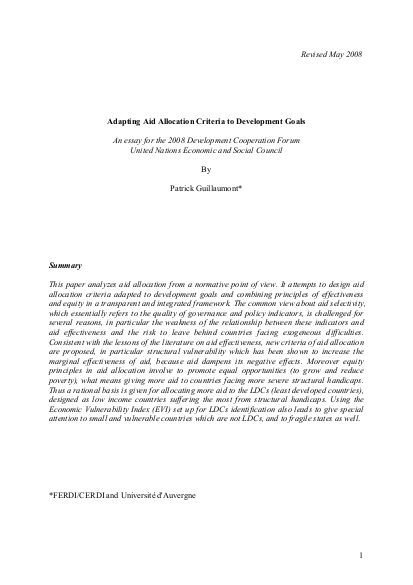
This paper analyzes aid allocation from a normative point of view. It attempts to design aid allocation criteria adapted to development goals and combining principles of effectiveness and equity in a transparent and integrated framework. The common view about aid selectivity, which essentially refers to the quality of governance and policy indicators, is challenged for several reasons, in particular the weakness of the relationship between these indicators and aid effectiveness and the risk to leave behind countries facing exogeneous difficulties. Consistent with the lessons of the literature on aid effectiveness, new criteria of aid allocation are proposed, in particular structural vulnerability which has been shown to increase the marginal effectiveness of aid, because aid dampens its negative effects. Moreover equity principles in aid allocation involve to promote equal opportunities (to grow and reduce poverty), what means giving more aid to countries facing more severe structural handicaps.
